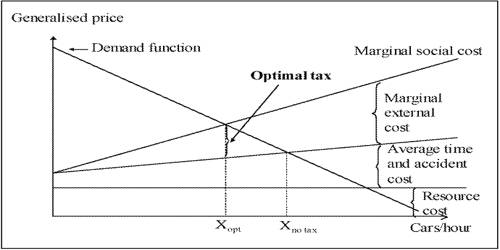Advertising has become an inevitable tool for both new as well as existing companies. It is the single most powerful element of the promotion mix and can enjoy a major part of the promotional budget. Obviously, it is a powerful weapon that can safeguard and augment the company’s interest. It is an integral part of economic and social life and a powerful technique for promoting the sale of the product.
There are unique types of ads. One can promote its products like display ads in newspapers, both physical and digital, social media ads, newspapers, magazines, outdoor advertising, radio, podcast, event marketing, email marketing, etc.
In this age of digital world advertising in social media like Instagram, Pinterest, Facebook, WhatsApp, etc. that are relatively inexpensive advertising.
Advertising through newspapers and magazines is traditional but is still a handy mode of advertisement. Plenty of people even reach out for the morning newspaper or love to read magazines. But most of today’s print media have their own digital presence. Verbal promotion is also one of the most effective ways of promoting your product by repeating the message on radio and podcasts. But the method that mostly engages the consumer is to create a video and post it on social media or pay it to run on sites like YouTube.
Actually, Advertising is directed to a large number of people and not to one individual. That is why we call it non-personal. Advertising is communication about products or ideas.
Advantages or Benefits of advertisements for the business –
- Meeting competition: Since today a number of products on the same need of the consumers are available in the market, it is obvious that no company can make profits for a long time if the consumers keep on changing their brands. Hence, advertisements attract consumers towards a particular product and urge them to stick to that brand.
- Steady demand: There are certain products that have only a seasonal demand. For example, umbrellas can be used only in the rainy season but the advertising asks us to use it in summer to prevent ourselves from the direct rays of the sun. Hence, the firm does not need to close itself during the off-season.
- Higher sales volume: Advertisements help the producers to reach out to the consumers quickly and improve their sales. If we are influenced by-products, we buy the products which we do not need at that instant. Obviously, we are also influenced by the timely offers that the producers advertise. If the offers last only for a certain time, we show our hurry to buy that product as soon as possible.
- Introduction of new products: The producers find it very easy to communicate the release of new products to the consumers in a very efficient and cost-effective way through advertisements. It simplifies the work of a salesman and also allows the customers to reach out to other products.
- Economies of scale: Advertisements also allow the producers to increase the volume of production which in turn increases the benefits they get from production in large scale. It is a fact that if we buy things in bulk, we get it a cheaper rate. The same thing is also applicable in the production process. We can also eliminate middleman such as wholesalers that reduces the cost for the consumers by reducing the profit margin. Commercial Banks also grant loans to such firms whose products are advertised.
- Goodwill: If a particular cosmetic company uses an actress or actor to advertise the products of its brand, it shall definitely develop reliability for its products. The public shall trust that company and its products which in turn shall increase the valuation of the goodwill and the image of the firm. It helps the firm to face strict competition during the business conditions of depression when all the consumers develop mistrust against a particular product.
- Employee morale: When the employees know that the products if a firm are advertised and have developed sufficient trust in the public, they shall be assured that their jobs are safe and they shall receive bonuses on account of profits made by the firm. It also enhances the qualities of a good salesman.
Advantages or Benefits of advertisements to the consumers –
- Convenience: When we know that we have to buy the product of a particular brand name, we shall not waste our time in searching out for the best one. We can make a choice even before we go to the market.
- Education of the consumers: Advertisements help us to become aware of the uses of a new product ad the functioning of the electronic items. If there are no advertisements, we shall never be able to know about the new companies that enter the market or the introduction of new and better products in the market.
- Fair prices: Advertisements reduces the cost of the product by providing the firms with the advantages of economies of scale and the elimination of the middleman. As a result, customers get goods at lower prices. Many expensive products of yesteryears have come within the reach of the common masses due to continuous advertising and consequent reduction in prices. Prices of widely advertised products tend to be stable during adverse business conditions such as depression.
- Better quality: As said earlier, the producers always try to retain their old consumers and make new ones by introducing some special changes in their product to make them differentiable from the others. Manufacturers are forced to maintain better standards of the commodity to retain consumers.
- Contact between producers and consumers: Advertisements provide links or contact numbers of the product or the service so that the consumers can report their grievances against the use of certain products so that the quality can be bettered. Hence, it brings the consumers and the producers closer to each other.
Advantages or Benefits of advertisements for society –
- Generates employment: Advertisements provide employment to people all around the world who are concerned in every field. Since through advertisements producers increase the sales and reach out to the consumers quickly, it increases the employment level in the country as more labor will now be required to boost up the production.
- Standard of living: Advertisements help in improving the quality of the products and allows the firms to introduce variable and different types of products with some special features. Hence, it improves the standard of living of people by allowing them to purchase goods relating to the current standards.
- Sustains the press: We all get the newspapers at a nominal cost of Rs.2 to Rs.4 but there are so many costs involved in its production. Hence, to make it affordable for the lower class people, newspapers sustain themselves by publishing advertisements on every page. Similarly, many of us write articles in this site as we all get paid through advertisements displayed by Google.
- Stimulates research and developments: If we have seen the cost sheet of any firm, we will notice that a huge amount of money is spent on the research and development of the product. Every firm tries to convince its old consumers and make new customers by developing some new types of products or improvements in the existing product.
- Promote art and culture: Advertisements have promoted the art of our country by showing the customs and traditions of old tribal and rural people. It also acts as a source of entertainment for the people, not all the ads perform this work but a few such as the Zoo-Zoo ads of the Vodafone.
The product is the heart of any advertising program. For successful advertising of the product, the marketing team needs to have in-depth knowledge of the product and its attributes. The packaging, trademark, color, style, and various other characteristics are the essential elements for effective marketing and advertising.
Disadvantages of Advertising –
Advertising too has its own limitations. In some cases, it’s being misused by few people overlooking their business interests.
The main weaknesses of advertising are discussed below:
- Deferred Revenue Expenditure: It is deferred revenue expenditure, as the results are not immediate. As advertising occupies a substantial portion of the total budget of the organization. Hence, investing a large sum in it does not necessarily yield immediate results thus limiting its utility.
- Misrepresentation of Facts: A major drawback of advertising is the misrepresentation of facts regarding products and services. Advertisers usually misrepresent unreal/false benefits of a product and make tall claims to excite people to indulge in actions leading to their benefit, but opposed to consumer’s self-interest.
- Consumer’s Deficit: Advertising creates desires as consumers have low purchasing power. It leads to discontentment. Such discontent is obviously not very desirable from the point of view of society, particularly if it affects a large majority of people. But it is important if it acts as a spur to social change.
- Barriers to Entry: Advertisements promote industrial concentration to a greater or lesser degree. The extent of such concentration may vary with the character of the individual trade, the advertise ability of the product, and the technical conditions of its production. Although, studies on this subject are not conclusive. The evidence of a positive association between advertising and concentration is weaker than can be expected.
- Wastage of National Resources: It is objected that advertisement is that it is used to destroy the utility of goods before the end of their normal period of usefulness. Now models of automobiles with nominal improvements are, for example, advertised at such high pressure that the old models have to be discarded long before they become useless, not that merely, the most-advertised products are delicate, fragile, and brittle.
- Increased Cost: It is much debated whether advertising induces additional cost upon a product which the community has to pay. In a sense, it is true since expenses on it form a part of the total cost of the product. But at the same time, it would be unjust to infer that if the advertising costs were cut down the goods would necessarily be cheaper. Advertising is, one of the items of costs but it is a cost that brings savings in its wake on the distribution side.
- Product Proliferation: Critics state that advertising encourages unnecessary product proliferation. As it leads to the multiplication of products that are almost identical, resulting in wastage of resources that could otherwise have been used to produce other products.
- Multiplication of Needs: Advertising compels people to buy things they do not need as it is human instincts, to possess, to be recognized in the society, etc., are provoked by advertisers in order to sell products. At times, various types of appeals are advanced to arouse interest in the product. Sentiments and emotions are played with to gain customers.
An effective advertising campaign creates permanent place for certain brands in the market. It blocks the entry of other competitors. A monopoly always has an ill-effect on the buyer’s interest. Many advertisements are highly objectionable because they undermine values and ethics. Vulgar advertisements like that of Axe offend public decency and encourage materialism in society. The advertisement also compels the consumer to buy things that are not needed as it is the human instincts to possess or to identify in society, and so forth.
Information Sources:
















